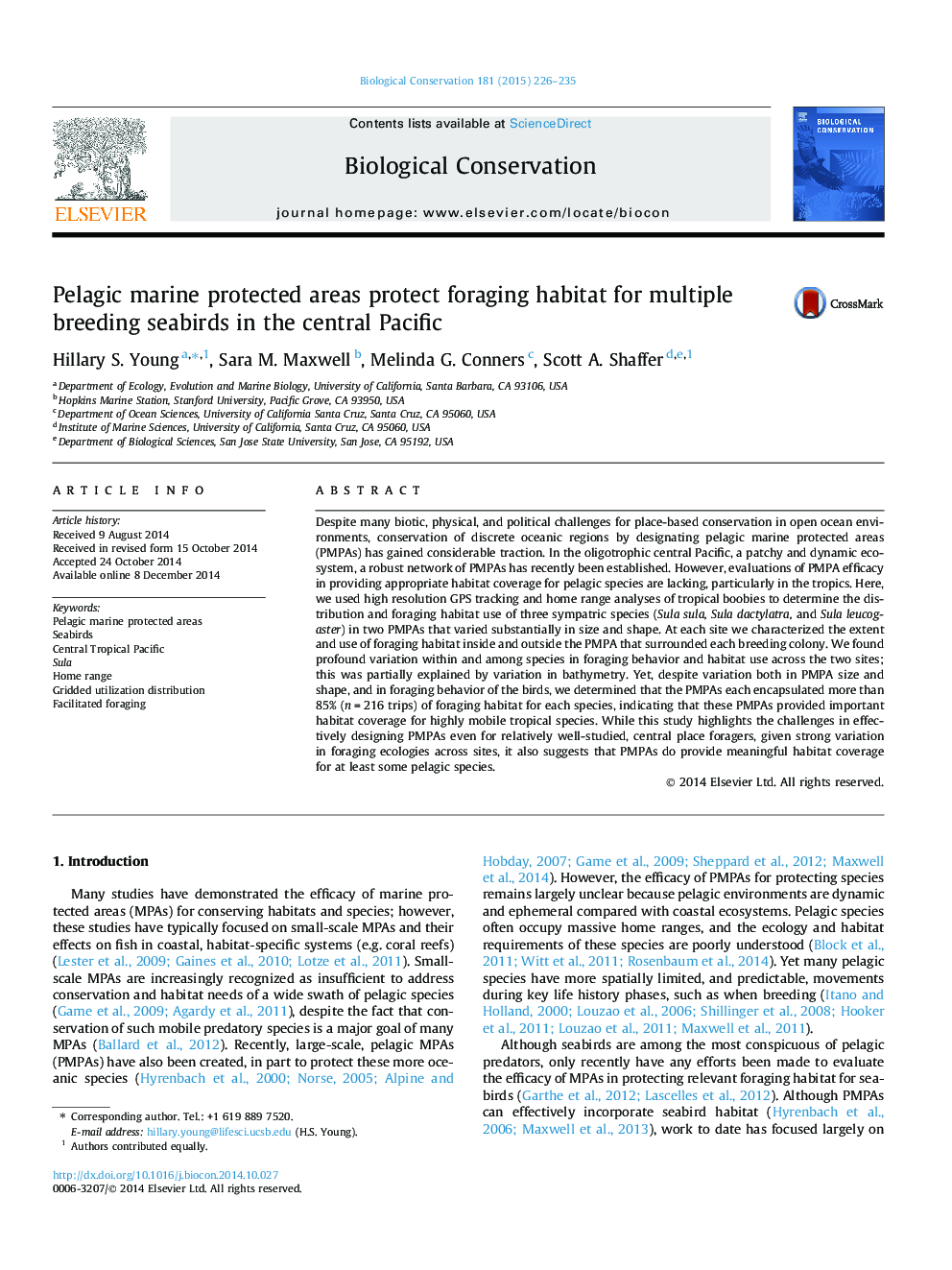| کد مقاله | کد نشریه | سال انتشار | مقاله انگلیسی | نسخه تمام متن |
|---|---|---|---|---|
| 6299405 | 1617920 | 2015 | 10 صفحه PDF | دانلود رایگان |

- We examine the efficacy of pelagic marine protected areas in protecting seabird habitat.
- Pelagic marine protected areas (PMPAs) protected more than 85% of foraging habitat.
- We observe strong differences in foraging behavior across PMPAs and among species.
- This drives variation in efficacy of PMPAs in covering foraging habitat.
- Existing PMPAs provide effective habitat coverage for some tropical pelagic species.
Despite many biotic, physical, and political challenges for place-based conservation in open ocean environments, conservation of discrete oceanic regions by designating pelagic marine protected areas (PMPAs) has gained considerable traction. In the oligotrophic central Pacific, a patchy and dynamic ecosystem, a robust network of PMPAs has recently been established. However, evaluations of PMPA efficacy in providing appropriate habitat coverage for pelagic species are lacking, particularly in the tropics. Here, we used high resolution GPS tracking and home range analyses of tropical boobies to determine the distribution and foraging habitat use of three sympatric species (Sula sula, Sula dactylatra, and Sula leucogaster) in two PMPAs that varied substantially in size and shape. At each site we characterized the extent and use of foraging habitat inside and outside the PMPA that surrounded each breeding colony. We found profound variation within and among species in foraging behavior and habitat use across the two sites; this was partially explained by variation in bathymetry. Yet, despite variation both in PMPA size and shape, and in foraging behavior of the birds, we determined that the PMPAs each encapsulated more than 85% (n = 216 trips) of foraging habitat for each species, indicating that these PMPAs provided important habitat coverage for highly mobile tropical species. While this study highlights the challenges in effectively designing PMPAs even for relatively well-studied, central place foragers, given strong variation in foraging ecologies across sites, it also suggests that PMPAs do provide meaningful habitat coverage for at least some pelagic species.
Journal: Biological Conservation - Volume 181, January 2015, Pages 226-235